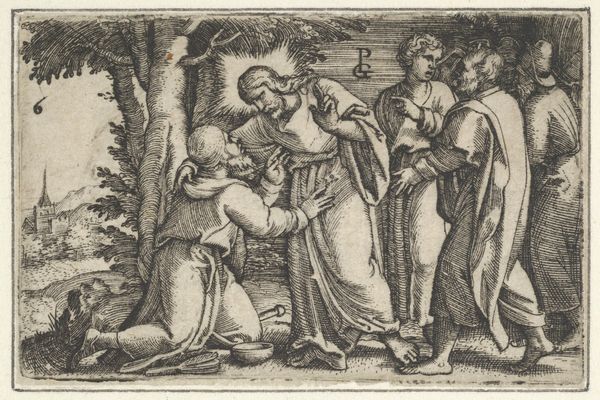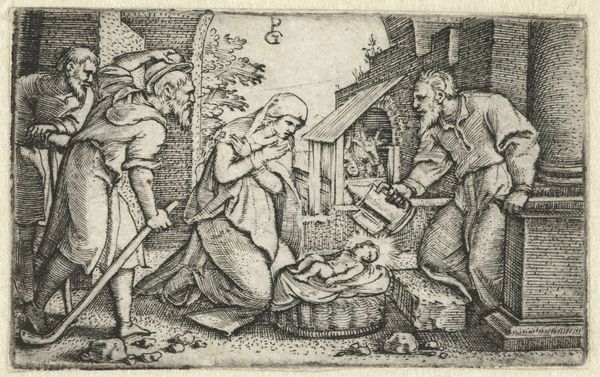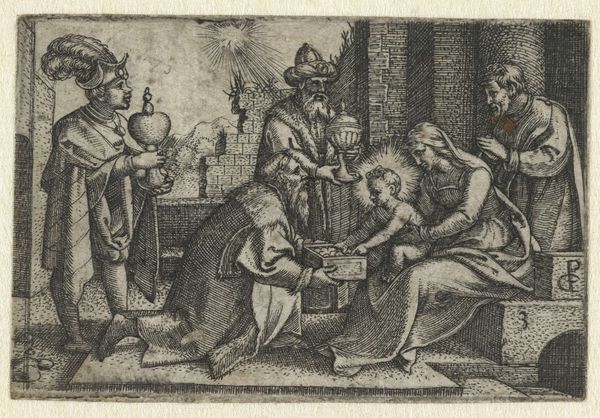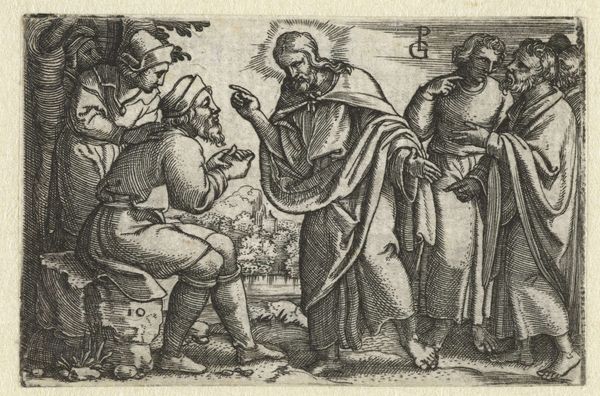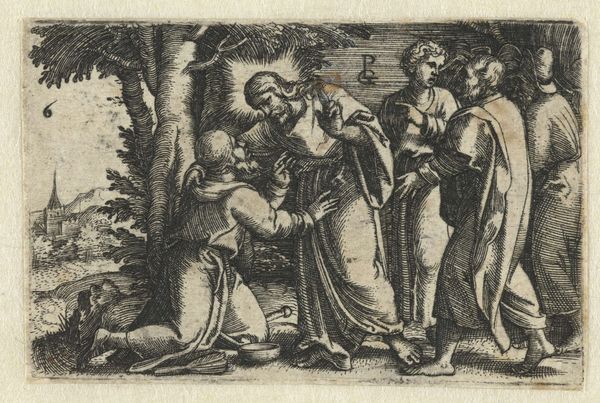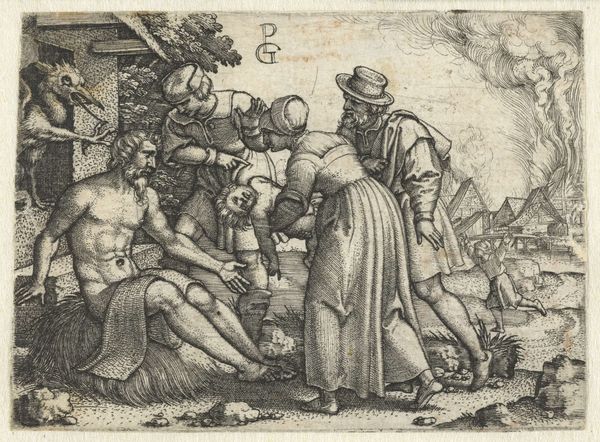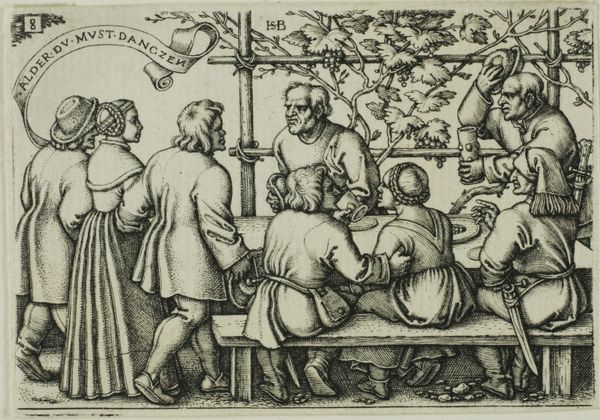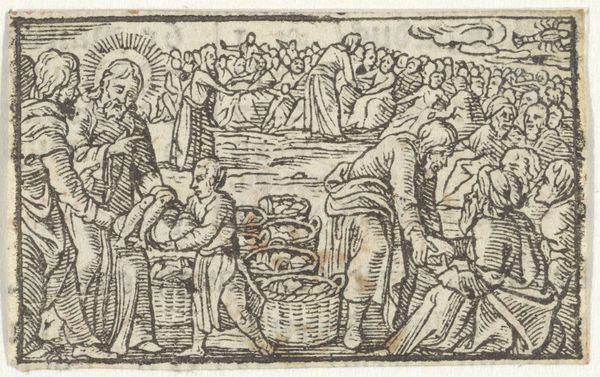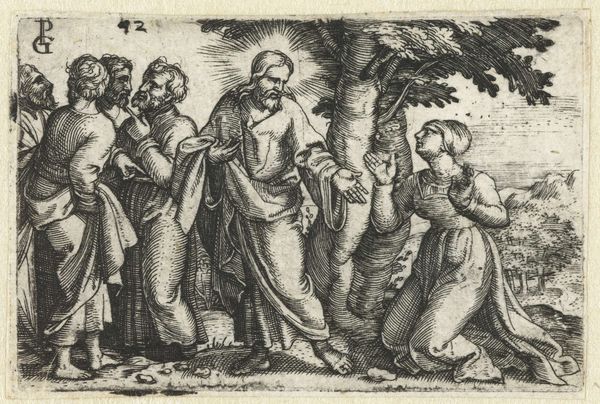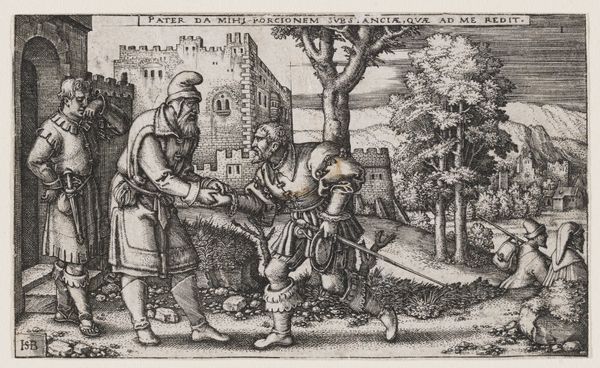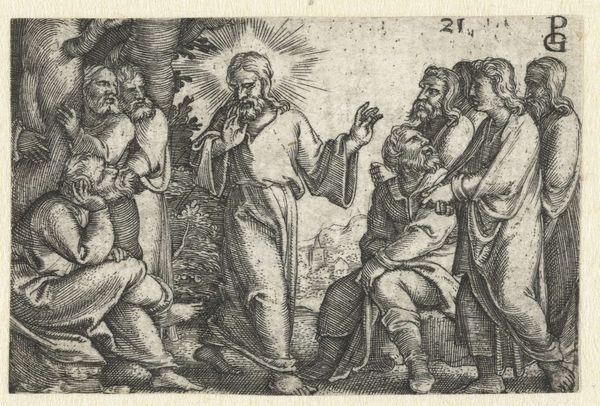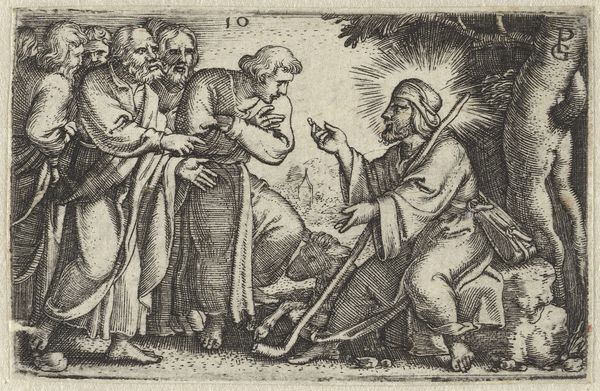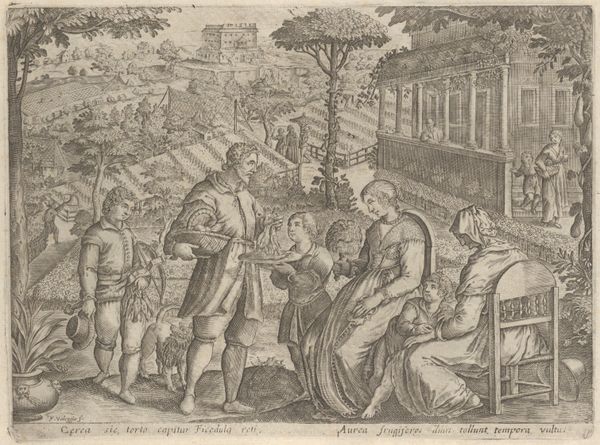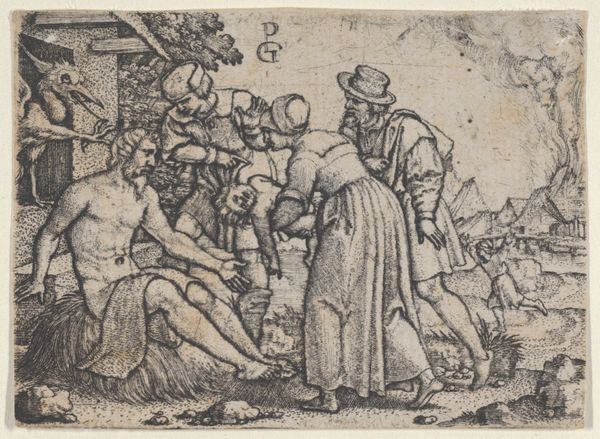
print, engraving
# print
#
figuration
#
genre-painting
#
history-painting
#
northern-renaissance
#
engraving
Dimensions: height 39 mm, width 60 mm
Copyright: Rijks Museum: Open Domain
This tiny print, "The Miraculous Feeding," was created in the mid-16th century by the German artist Georg Pencz using engraving on metal. Think about the labor involved in this image: the engraver would have used a tool called a burin to cut lines into a copper plate. These lines hold ink, which is then transferred to paper under great pressure. The fineness of the lines determine the image's detail and tonality. Pencz has expertly used hatching, small closely-spaced lines, to create depth and shadow, giving the scene its rich, textured feel. The material itself, a humble piece of metal, allows for the reproduction of images on a mass scale, speaking to the democratization of art during the Reformation. Engravings like this one weren't just aesthetic objects; they were vehicles for spreading religious and political ideas, reflecting a time of great social and religious upheaval. So, next time you see a print, remember the layers of skill, labor, and historical context embedded within its very material.
Comments
No comments
Be the first to comment and join the conversation on the ultimate creative platform.
